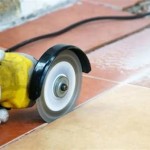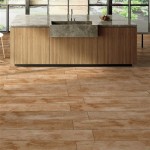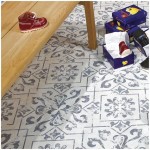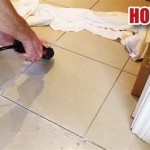Can You Lay Vinyl Plank Over Ceramic Tile? A Comprehensive Guide
The question of whether vinyl plank flooring can be installed over existing ceramic tile is a common one for homeowners considering a floor renovation. While the answer is generally yes, there are several crucial factors to consider to ensure a successful and long-lasting installation. Ignoring these factors can lead to problems such as unevenness, compromised adhesion, and eventual failure of the vinyl plank floor covering.
This article will provide a detailed exploration of the considerations, preparation steps, and potential challenges associated with installing vinyl plank over ceramic tile. It will cover the types of vinyl plank suitable for this application, the necessary subfloor preparation, and troubleshooting common issues. The information presented aims to equip readers with the knowledge necessary to make informed decisions and execute the installation properly.
Understanding the Suitability of Vinyl Plank for Tile Overlays
Not all vinyl plank flooring is created equal. The type of vinyl plank chosen will significantly impact the success of the installation over ceramic tile. There are two primary types of vinyl plank: glue-down and click-lock (also known as floating) vinyl plank. While both can be installed over ceramic tile, their preparation and application methods differ.
Glue-down vinyl plank is adhered directly to the subfloor using a specialized adhesive. This type of vinyl plank generally requires a smoother, more even surface than click-lock vinyl plank. Imperfections in the ceramic tile surface, such as grout lines or chips, can telegraph through the vinyl, resulting in an uneven and visually unappealing floor. Furthermore, the adhesive's effectiveness can be compromised if the tile surface is not properly prepared.
Click-lock vinyl plank, on the other hand, "floats" above the subfloor. The planks interlock with each other, creating a unified surface that is not directly attached to the subfloor. This type of vinyl plank is generally more forgiving of minor imperfections in the underlying ceramic tile. The flexibility of the floating floor allows it to bridge small gaps and irregularities, reducing the likelihood of telegraphing. However, significant unevenness or large gaps can still pose problems and require remediation.
The thickness of the vinyl plank is another critical factor. Thicker planks, particularly those with a dense core, are better at absorbing minor imperfections and providing a more stable surface. Thinner planks are more likely to conform to the underlying tile, accentuating any unevenness. When installing over ceramic tile, it is generally recommended to choose a vinyl plank with a thickness of at least 5mm or greater.
The wear layer, the protective layer on the surface of the vinyl plank, also plays a role. A thicker wear layer will provide greater resistance to scratches and dents, which is particularly important when the floor is subject to foot traffic or heavy furniture. When installing over existing ceramic tile, the wear layer can help protect the vinyl from wear caused by potential movement or slight imperfections in the subfloor.
Preparing the Ceramic Tile Subfloor
Proper subfloor preparation is paramount to a successful vinyl plank installation over ceramic tile. The goal is to create a smooth, level, and clean surface that will provide a stable base for the vinyl plank. Failure to adequately prepare the subfloor can lead to a multitude of problems, including unevenness, poor adhesion, and premature wear.
The first step is to thoroughly clean the ceramic tile surface. This involves removing any dirt, dust, grease, or other contaminants that could interfere with adhesion. Use a strong cleaner specifically designed for tile and grout, and scrub the surface thoroughly. Rinse the area thoroughly with clean water and allow it to dry completely.
Next, inspect the tile for any damage, such as cracks, chips, or loose tiles. Any damaged tiles must be repaired or replaced. Loose tiles should be re-adhered using a thin-set mortar. Cracks in the tile should be filled with a tile crack filler or epoxy. Chips can be repaired with a patching compound designed for ceramic tile.
One of the most critical aspects of subfloor preparation is addressing the grout lines. Grout lines are typically recessed below the surface of the tile, creating an uneven surface that can telegraph through the vinyl plank. To mitigate this, the grout lines must be filled with a leveling compound. A self-leveling underlayment is often the best option for covering large areas, creating a smooth, seamless surface. Alternatively, a cement-based patching compound can be used to fill the grout lines individually.
When applying a leveling compound, follow the manufacturer's instructions carefully. Ensure the compound is properly mixed and applied evenly across the tile surface. Allow the compound to dry completely before proceeding to the next step. Once the leveling compound has dried, sand the surface smooth to remove any imperfections or ridges.
After addressing the grout lines and imperfections, prime the tile surface with a primer recommended by the vinyl plank manufacturer. Primer improves adhesion and helps prevent moisture migration from the tile into the vinyl plank. Apply the primer evenly and allow it to dry completely before installing the vinyl plank.
Addressing Potential Challenges and Troubleshooting
Even with careful preparation, some challenges may arise when installing vinyl plank over ceramic tile. Understanding these potential issues and how to address them can help ensure a successful installation.
One common challenge is unevenness in the subfloor. Despite efforts to level the grout lines and repair damaged tiles, minor variations in the tile surface may persist. These variations can cause the vinyl plank to flex or bend, leading to an uneven appearance. To address this, consider using a thicker vinyl plank or installing an underlayment specifically designed for uneven subfloors. These underlayments provide additional cushioning and support, helping to minimize the effects of minor imperfections.
Another potential issue is moisture migration. Ceramic tile is porous and can allow moisture to pass through, particularly in damp environments. This moisture can damage the vinyl plank and potentially lead to mold growth. To prevent moisture migration, install a moisture barrier underlayment before laying the vinyl plank. This barrier will help protect the vinyl from moisture and prevent potential problems.
Adhesion problems can occur with glue-down vinyl plank if the tile surface is not properly prepared or if the wrong adhesive is used. Always use a high-quality adhesive recommended by the vinyl plank manufacturer. Ensure the tile surface is clean, dry, and free of contaminants before applying the adhesive. Apply the adhesive according to the manufacturer's instructions, and allow it to cure completely before walking on the floor.
Telegraphing, or the visible appearance of the grout lines through the vinyl plank, can be a persistent problem, even after leveling the grout lines. To minimize telegraphing, consider using a thicker vinyl plank with a textured surface. The texture can help to disguise any minor imperfections in the subfloor. Additionally, choose a vinyl plank with a pattern that will help to camouflage any visible grout lines.
Finally, be aware of potential height differences between the new vinyl plank floor and adjacent floors. This difference can create a tripping hazard and may require the installation of transition strips. Transition strips are available in a variety of styles and materials to match the vinyl plank floor and provide a seamless transition between different floor coverings.
By carefully considering these factors and taking the necessary precautions, homeowners can successfully install vinyl plank flooring over existing ceramic tile, transforming their spaces with a durable and aesthetically pleasing floor covering. Proper preparation and attention to detail are key to achieving a professional-looking result that will last for years to come.
Remember to always consult the vinyl plank manufacturer's instructions for specific installation guidelines and recommendations. Following these guidelines will help ensure a successful installation and protect the warranty of the flooring.

New Vinyl Plank Flooring Over Tile Table And Hearth

New Vinyl Plank Flooring Over Tile Table And Hearth

New Vinyl Plank Flooring Over Tile Table And Hearth

New Vinyl Plank Flooring Over Tile Table And Hearth

Can You Install Vinyl Plank Over Tile Flooring America

Can You Put Vinyl Plank Flooring Over Ceramic Tile Floors Blvd

Should You Install Vinyl Floor Over Tile

New Vinyl Plank Flooring Over Tile Table And Hearth

Lvt Flooring Over Existing Tile The Easy Way Vinyl Floor Installation Diy

New Vinyl Plank Flooring Over Tile Table And Hearth
Related Posts








